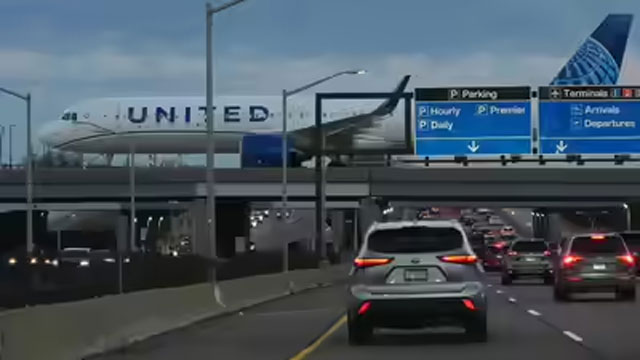Daijiworld Media Network - Washington
Washington, Nov 6: In an unprecedented move, the Federal Aviation Administration (FAA) announced on Wednesday that it will slash air traffic by 10% across 40 of the nation’s busiest markets starting Friday, as the ongoing government shutdown continues to strain the aviation workforce.
The decision, described by FAA administrator Bryan Bedford as one he had “not seen in 35 years in aviation,” aims to safeguard flight safety amid worsening staff shortages. The FAA handles over 44,000 aircraft movements daily including commercial, cargo, and private flights meaning thousands of scheduled services are expected to be affected.

Air traffic controllers, who have been working without pay since the shutdown began on October 1, are reportedly overworked, with many clocking six-day weeks and mandatory overtime. Several controllers have called in sick or taken up second jobs to cope with financial hardship, resulting in mounting delays across major airports.
“We’re not going to wait for a safety problem to truly manifest itself,” Bedford said. “The system is extremely safe today and will be extremely safe tomorrow.” He emphasized that the move was a precautionary step to prevent a potential crisis rather than a reaction to one.
US Transportation Secretary Sean Duffy echoed the sentiment, saying the decision was “proactive.” “Our heart goes out to those who will have flights disrupted,” Duffy added. “But this is necessary to preserve the safety profile of the system.”
According to aviation analytics firm Cirium, the 10% cut could mean around 1,800 flight cancellations, eliminating approximately 268,000 passenger seats. Chicago’s O’Hare International Airport alone could lose up to 121 of its 1,212 scheduled flights on Friday.
Major carriers — including United, American, and Southwest Airlines — said they would adjust schedules to minimize passenger inconvenience. United CEO Scott Kirby said the airline would prioritize protecting hub-to-hub and long-haul routes, noting, “That’s important to maintain the integrity of our network.”
Persistent shortages have been reported at key control facilities in Dallas, Houston, Newark, and Phoenix. According to the FAA’s internal data, from Friday to Sunday, 39 control centers reported limited staffing — a sharp rise from an average of eight before the shutdown.
Controllers and aviation unions have repeatedly urged Congress to end the stalemate, warning that safety concerns could escalate further. “I think we’re reaching a tipping point,” one controller told NPR anonymously, citing fears of burnout and retaliation.
Recalling past incidents, Duffy referred to the midair collision near Washington National Airport earlier this year. “We learned from that. Now we act before things go wrong,” he said.
The list of affected airports is expected to be released Thursday after FAA and transportation officials meet airline executives to finalise implementation plans.